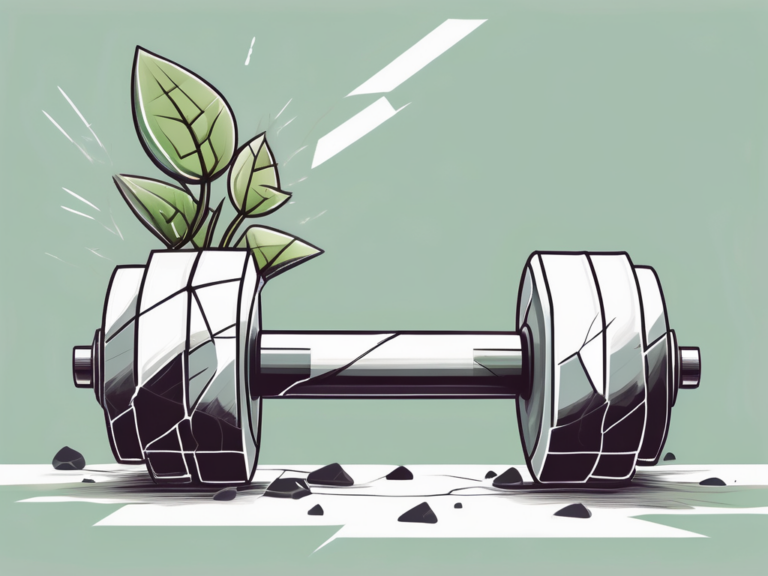Welcome Hummingbirds Home
Welcome to the enchanting world of hummingbirds! These fascinating creatures are known for their vibrant colors, incredible agility, and unique characteristics. By understanding their habits and creating a welcoming environment, you can attract these delightful birds to your garden and witness their remarkable beauty up close. In this article, we will explore the wondrous world of hummingbirds, from their migration patterns to their role in the ecosystem, and provide valuable insights on how to observe and enjoy these tiny wonders. So, let’s dive into the mesmerizing world of hummingbirds and discover ways to welcome them home.
Understanding Hummingbirds and Their Habits
The Unique Characteristics of Hummingbirds
Hummingbirds are one of nature’s most remarkable creations. With their iridescent feathers, swift flight capabilities, and the ability to hover in mid-air, they truly are a marvel. These tiny birds have a high metabolism and beat their wings at an astonishing rate. Some species can beat their wings up to 80 times per second! Their small size is perfectly designed for agility, allowing them to dart effortlessly from flower to flower in search of nectar.
Did you know that hummingbirds have the ability to fly forward, backward, and even upside down? Their unique wing structure and jointed shoulders enable them to perform intricate aerial acrobatics. Their beaks are specifically adapted to reach deep into flowers, allowing them to extract nectar with precision. These incredible adaptations make hummingbirds nature’s very own avian acrobats!
The Migration Patterns of Hummingbirds
Migratory birds, hummingbirds embark on remarkable journeys, traveling thousands of miles every year. These tiny creatures navigate vast distances, following specific migration routes to find suitable breeding and feeding grounds throughout the year. Some species of hummingbirds cross the Gulf of Mexico during their migration, flying nonstop for up to 500 miles!
This awe-inspiring migration is fueled by their voracious appetite for nectar, insects, and pollen. By creating a nurturing environment in your garden, you can provide a vital stopover for these tireless travelers during their long journeys. So, it’s time to roll up your sleeves and create a hummingbird-friendly haven right in your backyard.
Now, let’s delve deeper into the fascinating world of hummingbirds. Did you know that hummingbirds have an incredible memory? They can remember every flower they have visited and the exact location of each nectar source. This remarkable memory allows them to efficiently navigate their territory and maximize their energy intake.
Furthermore, hummingbirds are not only attracted to brightly colored flowers but also have a preference for tubular-shaped blooms. These flowers provide a convenient landing platform for the tiny birds, allowing them to access the nectar more easily. Some examples of flowers that hummingbirds love include trumpet vine, bee balm, and cardinal flower.
Another interesting fact about hummingbirds is their ability to enter a state of torpor. During cold nights or when food sources are scarce, hummingbirds can lower their metabolic rate and body temperature to conserve energy. This torpor state allows them to survive in harsh conditions until they can find a reliable food source again.
So, next time you spot a hummingbird in your garden, take a moment to appreciate the incredible adaptations and behaviors that make these birds so unique. By understanding their habits and providing a welcoming environment, you can become a part of their extraordinary journey.
Creating a Hummingbird-Friendly Garden
Choosing the Right Plants for Attraction
To entice hummingbirds to visit your garden, it is crucial to plant a variety of nectar-rich flowers. Their long, slender beaks are perfectly adapted to access the sweet rewards hidden deep within the blooms. Consider planting native flowering plants such as bee balm, cardinal flower, and trumpet vine. These plants provide an abundant supply of nectar, attracting hummingbirds from miles away.
In addition to nectar, hummingbirds also require small insects and spiders as a source of protein. By planting flowers that attract insects, such as coneflowers and salvias, you not only provide essential food for the hummingbirds but also create a balanced ecosystem within your garden.
Imagine the sight of a vibrant cardinal flower, its fiery red petals standing tall amidst a sea of green foliage. As the morning sun casts its warm glow, a tiny hummingbird hovers above, its wings beating at an astonishing rate of 50 times per second. With its needle-like beak, it delicately dips into the flower, savoring the sweet nectar within. The hummingbird’s presence brings a sense of enchantment to your garden, a reminder of the delicate beauty that nature beholds.
Furthermore, the trumpet vine, with its trumpet-shaped blossoms, beckons the hummingbirds with its vibrant orange hue. As they approach, their iridescent feathers glisten in the sunlight, creating a mesmerizing display of colors. The hummingbirds dart from flower to flower, their agility unmatched, as they indulge in the nectar-filled banquet you have thoughtfully provided.
Providing Water Sources for Hummingbirds
While hummingbirds primarily obtain moisture from the nectar they consume, they also rely on water for bathing and preening their feathers. Provide shallow water sources, such as birdbaths or small fountains, for them to refresh and cleanse themselves. Adding a few pebbles or rocks to the water feature will enable hummingbirds to perch while they take a quick dip. Ensure to change the water regularly to maintain cleanliness for our feathered friends.
Picture a serene birdbath nestled amidst your garden oasis. Its smooth surface reflects the surrounding foliage, creating a tranquil ambiance. The hummingbirds, with their insatiable curiosity, approach the water source cautiously. With a delicate touch, they dip their tiny feet into the cool water, sending ripples across the surface. As they splash and play, droplets of water glisten on their feathers, adding a touch of magic to the scene.
By providing these water sources, you not only fulfill the hummingbirds’ physical needs but also invite them to engage in their natural behaviors. Witnessing their graceful movements as they bathe and groom themselves brings a sense of joy and fulfillment, knowing that you have created a haven for these magnificent creatures.
The Importance of Hummingbird Feeders
Selecting the Perfect Hummingbird Feeder
Hummingbird feeders can be a valuable supplement to the natural nectar sources in your garden. These tiny birds have incredibly high metabolisms and need to consume large amounts of nectar to fuel their energetic lifestyles. By providing them with a reliable food source, you are not only helping them survive, but also thrive.
When choosing a feeder, opt for one with bright colors, as these will attract hummingbirds from a distance. These vibrant hues mimic the colors of the flowers that hummingbirds are naturally drawn to. By selecting a feeder that stands out, you are increasing the chances of catching their attention and inviting them into your garden.
Look for feeders with perches or feeding ports that mimic the shape and depth of flowers. Hummingbirds are accustomed to sipping nectar from the delicate blooms of various plants. By providing them with a feeder that closely resembles their natural feeding environment, you are ensuring a comfortable and familiar experience for these delightful visitors.
Remember to clean and refill the feeders regularly to ensure that the nectar remains fresh and uncontaminated. Hummingbirds have a keen sense of taste and can detect spoiled nectar from a distance. A solution of four parts water to one part white granulated sugar closely replicates the sugar content found in natural flower nectar. This homemade nectar is a cost-effective and safe alternative to store-bought solutions.
Avoid using honey or artificial sweeteners, as they can be harmful to hummingbirds. Honey can contain harmful bacteria that can cause illness, while artificial sweeteners lack the necessary nutrients and calories that hummingbirds need to sustain their high-energy lifestyles. By sticking to the tried-and-true sugar water solution, you are providing them with a safe and nutritious option.
Proper Maintenance of Hummingbird Feeders
Regular maintenance of your hummingbird feeders is essential to maintain the health and well-being of these marvelous birds. As with any food source, cleanliness is of utmost importance. Hummingbirds are susceptible to mold and bacteria, which can grow rapidly in the warm and sugary environment of a feeder.
Clean the feeders thoroughly every few days to prevent the growth of mold or bacteria. Use a solution of mild dish soap and hot water, and rinse the feeder thoroughly before refilling. Pay close attention to any nooks and crannies where residue may accumulate. A clean and hygienic feeder will not only ensure the health of the hummingbirds but also encourage them to keep returning to your garden, time and time again.
Additionally, consider the placement of your hummingbird feeders. Hang them in areas that are easily accessible to the birds, but also provide some shelter from the elements. Hummingbirds appreciate a safe and comfortable feeding environment, away from strong winds or direct sunlight. By creating an inviting space for them to dine, you are increasing the likelihood of repeat visits and the opportunity to observe these fascinating creatures up close.
Protecting Hummingbirds from Predators
Identifying Common Hummingbird Predators
As natural prey, hummingbirds face various threats from predators. Snakes, cats, and larger birds such as jays and hawks can pose a danger to these delicate creatures. Positioning feeders and perches near trees or shrubs can provide hummingbirds with quick escape routes, minimizing the risk of predator attacks. Regularly trim trees or shrubs to reduce hiding places for potential threats.
Did you know that some snakes have developed unique hunting techniques to catch hummingbirds? The green vine snake, for example, has the ability to mimic the appearance of a leaf, blending seamlessly with its surroundings. This camouflage allows the snake to ambush unsuspecting hummingbirds that come too close. It’s truly fascinating how predators have adapted to their environment to catch their prey.
Keep domestic cats indoors, as they are instinctive hunters and can cause harm to hummingbirds. Additionally, consider installing cat deterrents, such as motion-activated sprinklers, to discourage cats from entering your garden.
Speaking of cats, did you know that their hunting instincts are deeply rooted in their DNA? Even well-fed domestic cats have an innate drive to hunt, which can put hummingbirds at risk. By keeping cats indoors, we not only protect the birds but also ensure the safety of our feline friends, as they are less likely to encounter dangerous situations outside.
Implementing Safety Measures for Hummingbirds
Windows can prove fatal for birds, including hummingbirds. To avoid collisions, affix decals or UV-reflective window stickers to your windows. These help to break up the reflection and alert birds to the presence of a barrier. Positioning the feeders away from windows and placing window feeders strategically can also redirect the birds’ flight paths.
It’s incredible how something as simple as a sticker can make a significant difference in protecting hummingbirds. By creating a visual barrier, we can prevent tragic accidents and allow these beautiful creatures to navigate their surroundings safely. Let’s not underestimate the power of small actions in making a big impact.
Avoid using pesticides in your garden, as they can be toxic to hummingbirds and other wildlife. Instead, try organic pest control methods or introduce beneficial insects that naturally prey upon garden pests. Creating a chemical-free environment ensures the safety and long-term well-being of hummingbirds.
Did you know that hummingbirds play a crucial role in pollination? These tiny birds are excellent pollinators, transferring pollen from one flower to another as they feed on nectar. By eliminating the use of pesticides, we not only protect the hummingbirds but also support the overall health of our ecosystem. It’s a win-win situation for everyone involved.
The Role of Hummingbirds in the Ecosystem
Pollination and the Hummingbird
Hummingbirds play a vital role in pollination, transferring pollen from flower to flower as they feed on nectar. With their long beaks and tongues, they are well-suited for reaching deep into tubular flowers, where pollen often resides. By hosting these winged pollinators in your garden, you contribute to the biodiversity and health of your local ecosystem.
Hummingbirds and Insect Control
While hummingbirds mainly feed on nectar, they also consume small insects and spiders to meet their protein requirements. These voracious insect-eaters help to control populations of pests that can damage your garden. By attracting hummingbirds, you create a natural form of pest control that is not only efficient but also chemical-free.
But did you know that hummingbirds are not just important for pollination and insect control? These fascinating creatures have a few more tricks up their feathers that make them even more valuable to the ecosystem.
One lesser-known role of hummingbirds is their contribution to seed dispersal. As they visit various flowers in search of nectar, hummingbirds inadvertently pick up pollen on their bodies. When they move on to the next flower, some of this pollen rubs off, fertilizing the plant and allowing it to produce seeds. As the hummingbird continues its journey, it unknowingly carries these seeds to new locations, helping to disperse plant species and promote genetic diversity.
Additionally, hummingbirds are important indicators of environmental health. Their presence or absence in an area can provide valuable insights into the overall well-being of the ecosystem. Since hummingbirds rely on a variety of plants for food and nesting materials, their presence indicates a diverse and healthy habitat. Conversely, a decline in hummingbird populations may signal environmental changes or habitat degradation that require attention and conservation efforts.
Observing and Enjoying Hummingbirds
The Best Times to Watch Hummingbirds
To catch a glimpse of hummingbirds in action, it’s essential to know the best times to observe them. Early mornings and late afternoons are when hummingbird activity is usually at its peak. These energetic birds are busiest during the cooler parts of the day when flowers are nectar-rich and insects are abundant.
Picture this: it’s a serene morning, the sun is just beginning to rise, and the air is crisp. As you sit quietly in your garden, a sense of anticipation fills the air. Suddenly, a flash of iridescent feathers catches your eye, and there it is – a hummingbird, hovering effortlessly in front of a vibrant flower. You hold your breath, not wanting to disturb this delicate creature as it delicately sips nectar from the flower’s petals. This magical moment is made possible by your knowledge of the best times to watch hummingbirds.
Patience is key when watching hummingbirds. Find a comfortable spot near their favorite flowers, and remain still and quiet. Blend into the environment, and soon you’ll be rewarded with the delightful sight of these tiny dynamos buzzing around your garden.
Respectful and Responsible Bird Watching
When observing hummingbirds, it’s crucial to respect their habitat and behavior. Do not disturb their nests or approach them too closely, as this can cause distress and disrupt their daily routines. Binoculars and zoom lenses are the best tools for getting an up-close view of these beautiful creatures without disturbing them.
Imagine this: you’re standing at a safe distance, binoculars in hand, as you watch a hummingbird gracefully dart from flower to flower. Its wings beat so rapidly that they become a blur, creating a mesmerizing display of agility and speed. You marvel at the intricate patterns on its feathers, each one a work of art. By observing hummingbirds responsibly, you not only protect their well-being but also gain a deeper appreciation for their extraordinary beauty.
Remember, hummingbirds are wild animals, and our role is to be responsible stewards of their environment. By creating a welcoming haven for them, we can contribute to the conservation of these extraordinary birds.
So, embark on this rewarding journey of welcoming hummingbirds home. By understanding their habits, creating a hummingbird-friendly garden, and offering them a safe haven, not only will you be treating yourself to a visual spectacle but also be making a positive impact on the natural world. Let your garden become a sanctuary where these magnificent creatures can thrive, and marvel at the joy they bring as they dazzle you with their vibrant colors, extraordinary flight, and indomitable spirit. Welcome hummingbirds home with open arms and watch as your world comes alive with their magical presence.
Immerse yourself in the enchanting world of hummingbirds, where time seems to stand still as you witness their aerial acrobatics and delicate beauty. As you become more attuned to their behavior and patterns, you’ll discover a whole new level of appreciation for these remarkable creatures. So, grab your binoculars, find a cozy spot in your garden, and prepare to be captivated by the wonders of hummingbird watching.






